Planning a bathroom renovation? Making the tough decisions?
Picking the right sanitary and accessories can be difficult but none of the bathroom choices is as difficult as choosing between tubs vs. showers.
The age-long debate still continues as both come with their distinct set of advantages and disadvantages.
There are numerous factors which can affect your choice of tubs vs. showers.
These factors can range from personal preference to budget, bathroom space, and family requirements.
Let’s have a look at each of these determining factors.
If you’d like to see a graphical breakdown of tubs vs. showers, we got you covered:
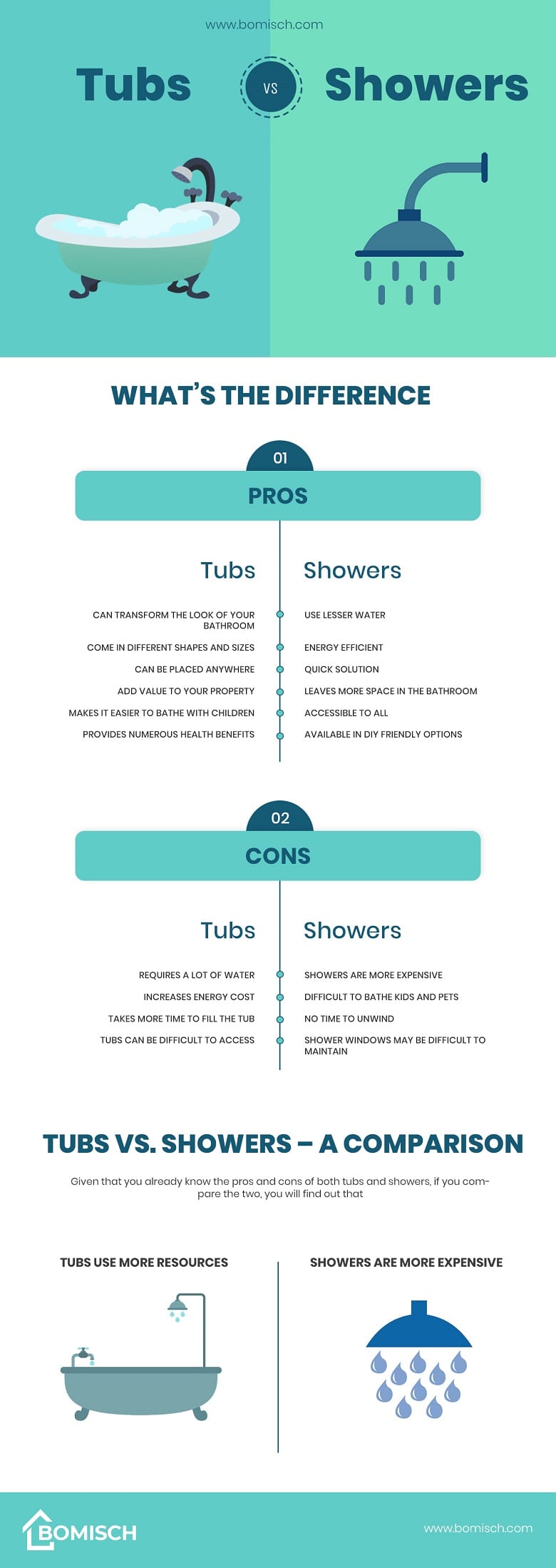
Share this Image On Your Site
<p><strong>Please include attribution to Bomisch.com with this graphic.</strong><br /><br /><a href=’https://www.bomisch.com/tubs-vs-showers/’><img src=’https://www.bomisch.com/wp-content/uploads/2020/03/Tubs-vs-Showers.jpg’ alt=’Tubs vs Showers’ width=’780px’ border=’0′ /></a></p>
Bathroom Space
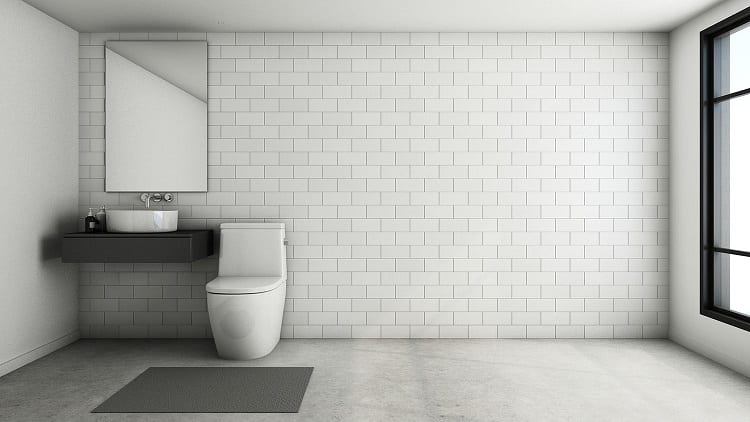
When it comes to size, some bathrooms can be luxurious while others can be significantly smaller.
If you describe your bathroom as small, then a shower is a better option compared to a tub.
Though tubs are available in different sizes, a standing shower can leave more free space in your bathroom.
Budget
How much you are willing to spend on a tub or shower is also an essential consideration.
Tubs are often a cheaper alternative, whereas showers are pricier. So if have a limited budget, it is better to invest in a tub.
Preference of Users
A standing shower is the choice of many young on-the-go adults.
Same goes for the elderly who have difficulty in getting in and out of the tub.
Also, a standing shower is a safer option for people with injuries and disabilities.
But if you have young kids or pets in the house, then you need a tub in the house.
Also, for people who want to relax and unwind after a day at work, a tub is definitely the much needed choice.
So the choice of tubs vs. showers depend upon your personal preference and needs of the family.
Resale Value

Having a tub in the bathroom can affect the resale value of your house.
Very often, people with young children and pets prefer a tub.
So if you don’t have a tub in the house, it can affect the resale value of your house.
Though there are various factors which an affect your choice of tubs vs. showers but deciding between the two is indeed a tough call, especially because both these fixtures share various similarities.
Both are Available in a Variety of Styles
You can find a lot of variety of tubs and showers in the market. Tubs can be fixed to the wall or can be freestanding.
They can have a standard depth but you can also find tubs which are deeper and wider. Some have built in water jets while others don’t.
On the other hand, different varieties of shower are also available.
So you can go for walk-in showers which come without doors and curtains, but you can also find showers which are enclosed.
Both are Available in Different Materials
You can find showers which are made from fiberglass but you can also find other more costly options such as natural stone.
Similarly, you can go for more affordable tubs made up of acrylic.
At the same time, you can find enamel coated cast iron tubs which are slightly more expensive.
Both Offer Different Water flow Options
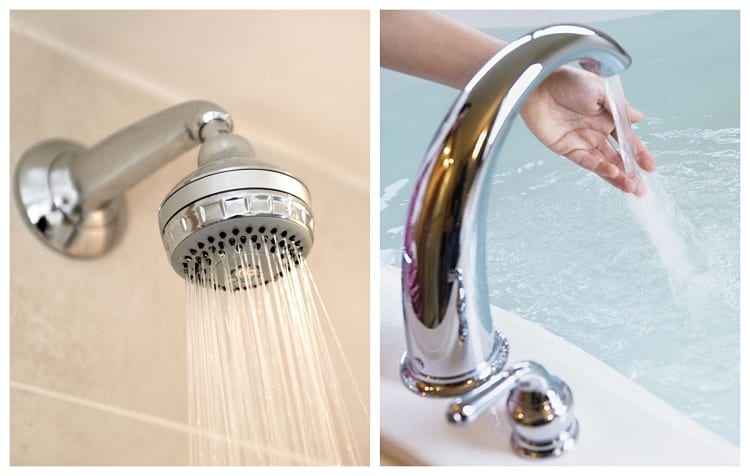
It is widely believed that water flow in a tub can be modified for providing therapeutic benefits.
In reality, both tubs and showers come with various water flow options.
In tubs, one can go for built-in jets which provide massaging blasts of water.
In case of showers, different heads can be used to modify the water flow.
While there are a few similarities, there are far more differences.
So, when choosing between tubs vs. showers, it is important to fully understand all the pros and cons of each of these bathroom essentials.
Ahead, you will learn about the advantages and drawbacks of both tubs and showers.
Pros and Cons of Tubs
Pros of Tubs
Tubs come with a distinct set of advantages. They are designed to cater to a certain category of people who have specific needs.
Can Transform the Look of Your Bathroom
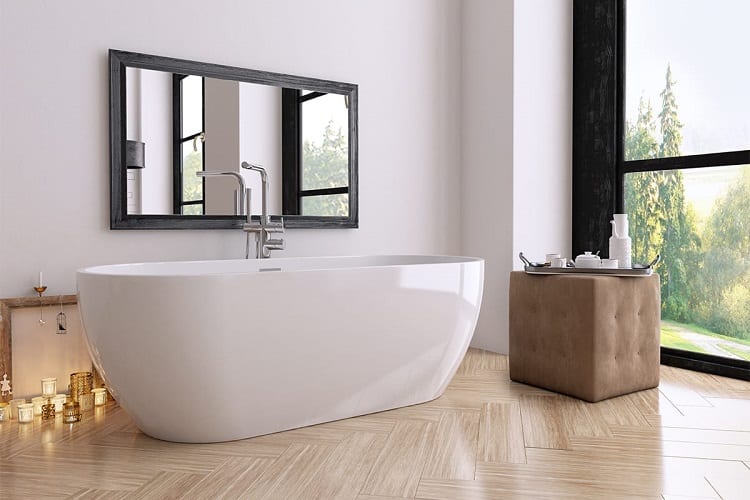
Designs of tubs have drastically changed over the last few years.
From the standard acrylic bath to free standing and claw foot tubs, the latest designs and features of the tub can completely transform the look of your bathroom.
Also, given the variety of styles, you can choose a tub which best suit the look of your existing bathroom.
So if you have a traditional theme, you can go for a claw foot tub which will add elegance to the look of your bathroom.
On the other hand, if you have limited space, you can invest in a free standing tub.
When compared to a standard tub, a free standing tub is a space saving option.
But if you are looking for an option which is easy to maintain and cost effective, a standard tub is your perfect choice.
Come in Different Shapes and Sizes
It is general perception that tubs occupy a lot of space and are a convenient option only for larger bathroom.
However, this is not true. Tubs come in a variety of sizes and shapes.
So you can choose the one which best suits the space in your bathroom.
A standard tub can measure up to 30 inches in width but can be up to 70 inches long.
If space is the primary consideration, you can go for a free standing tub.
It is slightly smaller than the stand tub and measures 30 inches in width and is 60 inches long.
This leaves more space in your bathroom. But if you want a contemporary style along with space saving option, choosing the claw foot tub is ideal for you.
Claw foot tub can range from 54 inches and go up to 72 inches in length with a width ranging between 30 and 40 inches.
Can be Placed Anywhere
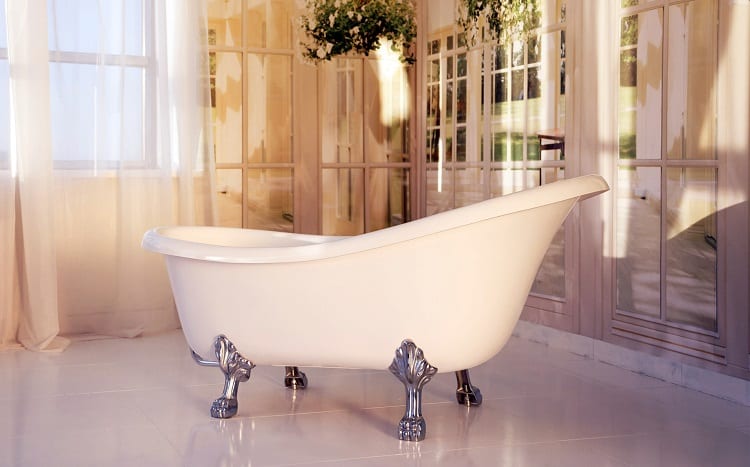
Standard tubs are often fixed at a certain place in your bathroom.
But fortunately, standard tubs are not the only choice of tubs you have.
As mentioned earlier, tubs are available in a variety of shape and sizes and freestanding tub varieties can be placed anywhere because they are finished on all sides.
So if you are planning to invest in a tub, you can simply purchase one without worrying about fixing it.
Add Value to Your Property
Having a tub in your house can significantly improve the value of your property.
Apart from increasing the value, it also improves the marketing of your house.
This is because most people with younger children and pets prefer a bathroom with a tub.
So simply by investing in a tub, you will get a chance to sell your property quickly and at a better price.
Makes it Easier to Bathe with Children
Children love bathe. Tubs provides an opportunity for children to splash in the water while adding convenience for parents.
This is because it is easier to bath smaller children in tubs.
Also, tubs are a space for fun filled family interaction where young children not only bath but can swim and have a great time.
Provides Numerous Health Benefits
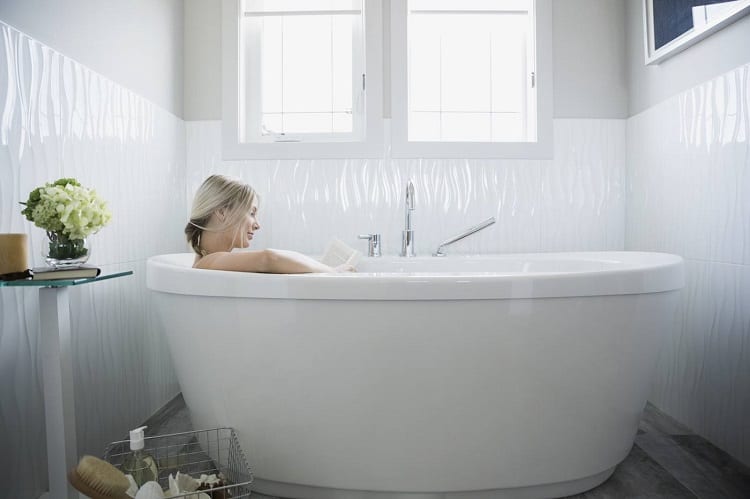
Taking a bath is not just about cleaning yourself. It is also about relaxing.
A tub provides a perfect opportunity to relax and unwind after a tiring day.
At the same time, it is associated with numerous health benefits.
Various studies have proved that hydrotherapy ease muscle pain, improves cardiac health and aids in breathing.
This relaxing activity is also associated with enhancing mood, alleviating depressive symptoms and managing body weight.
Who knew a simple bathe can have so many health benefits?
Cons of Tubs
While there are numerous advantages of tubs, they do not come without cons. Let’s take a look at some of the drawbacks of tubs.
Requires a lot of Water
One of the biggest drawback of tubs is that it requires a lot of water.
An average standard bath tub roughly holds around 80 gallons of water.
While a smaller counterpart can hold as much as 40 gallons. That’s a lot of water! In a world of scarcity, tubs are not an eco-friendly option.
Increases Energy Cost
Since you need to fill in a lot of warm water in a tub, this will reflect in higher energy cost.
Apart from the use of water, the increased energy cost is another major drawback of tubs.
Takes More Time to Fill the Tub
Filling a tub requires a lot of time. So if you are on-the-go and need a quick shower, then tub is definitely not the right choice for you.
However, if you are planning to relax and unwind after a long day and have all the time to fill in the tub, then go for it.
Tubs Can be Difficult to Access
While tubs make it easier to bath younger children, older adults and people with disabilities can find it difficult to get in and out of the tub.
Similarly, people with injuries can have trouble accessing the tub.
Pros and Cons of Showers
Now that you are fully aware of the pros and cons of tubs, it is time to look into the pros and cons of showers.
This information will surely help in making the right choice for your bathroom staple.
Pros of Showers
Use Lesser Water
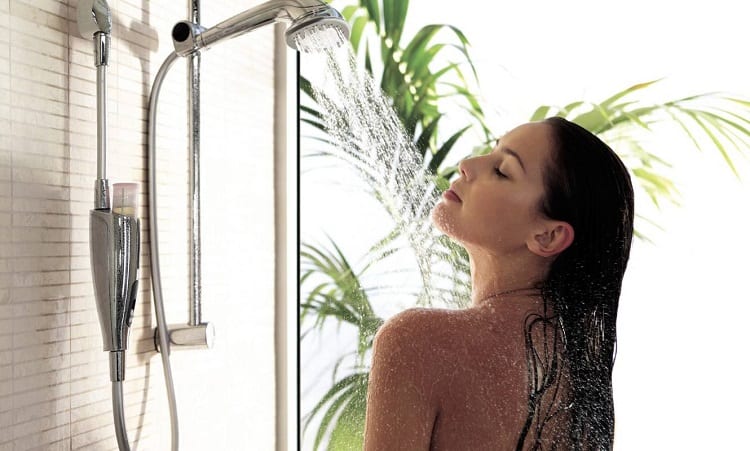
The use of water in showers is limited and is solely based on your needs. Typically, water is used at the rate of 2.1 gallons per minute.
So an average American who spends 8.2 minutes in shower ends up using 17.2 gallons of water.
This is much lesser when compared to the use of water in tubs.
Energy Efficient
Also, since the use of water is limited, you need lesser energy to heat the water. So in terms of energy efficiency, showers use less energy and help you save on your energy cost.
Quick Solution
While you need a lot time to fill up the tub, a shower is a convenient option for those who want a quick fix.
If you want a bath, all you need to do is to turn on the tap. No waiting!
Leaves More Space in the Bathroom
Most modern bathrooms are compact. There is limited space so by installing a shower, you end up leaving more free space in your bathroom.
Accessible to All
Showers are a viable option for people of all ages and with all types of physical conditions.
So whether you are an older adult with limited mobility or a physically fit young adult, a shower provides a convenient bathing experience for all.
Available in DIY Friendly Options
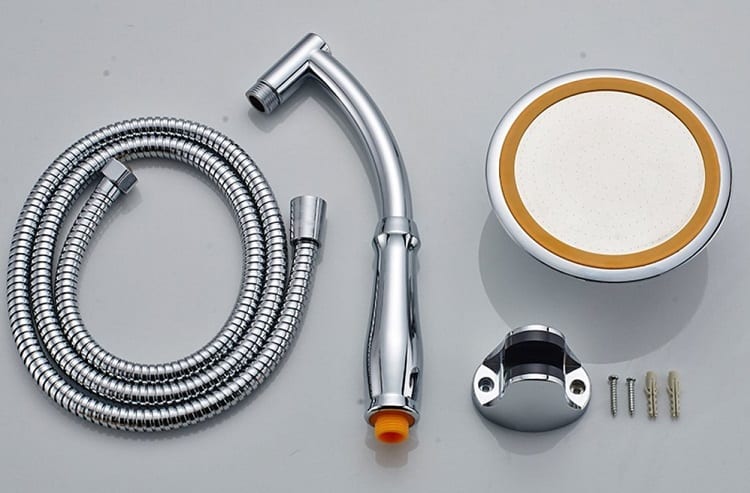
If you are planning to buy a shower kit from a home centers, you can find many DIY friendly options.
With some plumbing skills and tools, you can easily install a shower in your home.
Cons of Shower
Showers which are convenience in your bathroom, does not come with any drawbacks. Some of the cons of shower are
Showers are More Expensive
While showers are more environmental friendly and energy efficient, they come with a cost. And that cost is the installation cost.
Showers are generally more expensive compared to tubs but they can help you save in the long run.
Difficult to Bathe Kids and Pets
Getting kids into shower can be tough. For parents of younger kids, using a shower to bathe their children is a difficult option.
No Time to Unwind
One of the biggest drawbacks of showers is that you don’t get an opportunity to unwind.
Since you are standing constantly while taking a shower, you cannot relax.
Also, since the hot air which results from warm water is free and can circulate in the entire bathroom.
This not only gives a less relaxing shower experience but at the same time can increase the humidity in the bathroom.
Shower Windows May be Difficult to Maintain
In case where you have installed shower with windows, maintaining these shower windows can be tough.
After a bathe, you will have to clean the glass window to avoid any marks and calcium stains on the glass.
Similarly, if you have a shower curtain, you will have to replace it frequently.
Tubs vs. Showers – A Comparison
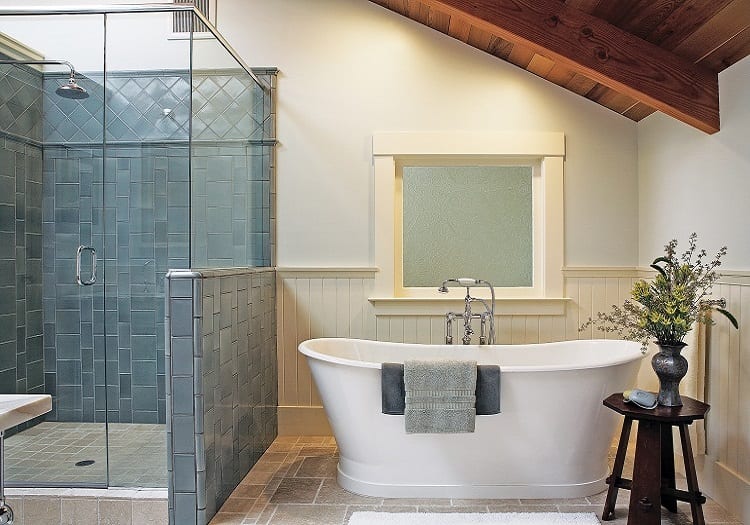
Given that you already know the pros and cons of both tubs and showers, if you compare the two, you will find out that
Showers are More Expensive
Compared to tubs, showers are more expensive to install.
The average installation cost of a tub can range anywhere from $400 to $8,000 whereas showers can be slightly more expensive.
The average cost of shower can vary between $450 and can go up to $10,000.
Obviously with more advanced features, the price of both showers and tubs will increase but generally showers are more expensive than tubs.
Tubs Use More Resources
When it comes to the use of resources, tubs are more expensive.
Tubs requires a lot more water compared to shower.
An average tub requires anywhere between 40 to 80 gallons of water whereas a five minute shower uses between 10 to 25 gallons of water.
At the same time, heating the water in a tub requires a lot more energy compared to showers.
So in terms of eco-friendliness and use of resources, showers are a more viable option.
Showers are DIY Friendly
In terms of ease of maintenance, showers are the best. When mishandled, tubs are prone to fractures and damage.
Also since standard tubs are fitted in the bathroom, it is more difficult to repair it on your own.
On the other hand, you can easily find a DIY friendly option of showers.
With some basic plumbing, you can install and repair your shower; something which is not possible with tubs.
Both Cater to People with Different Needs
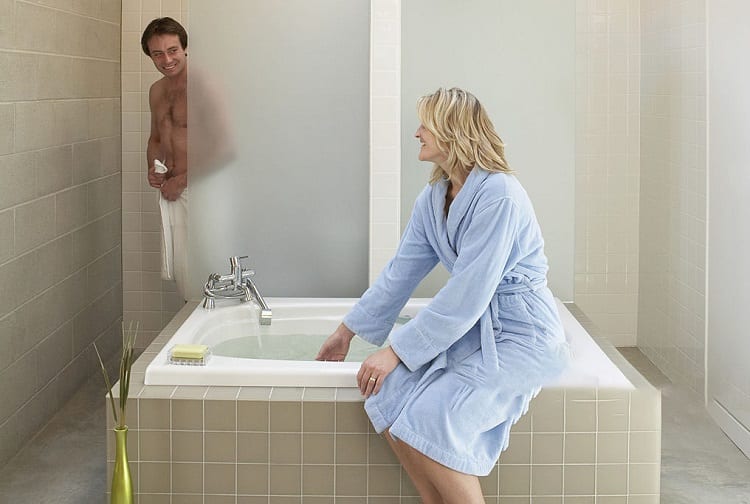
Both tubs and showers are designed to cater to people with different needs.
While tubs are choice for families with young kids and pets, many empty nesters prefer showers.
Also older adults and people with injuries and disabilities find it easier to use the shower compared to a tub.
This is because they are physically not capable to get in and out of the tub conveniently.
Moving Forward
While the shower vs. tub has remained a popular debate since ages, according to the latest trends, many people invest in a combination of two.
So if you have space and budget, go for both so that you can get the best of both showers and tubs.
But if you bathroom and your budget can’t accommodate it, then the choice depends upon your personal preference and your family needs.
As a general rule, it is recommended that you should have at least one tub in your house.
In the long run, this will pay off in terms of higher resale value and improved marketing of your property.
